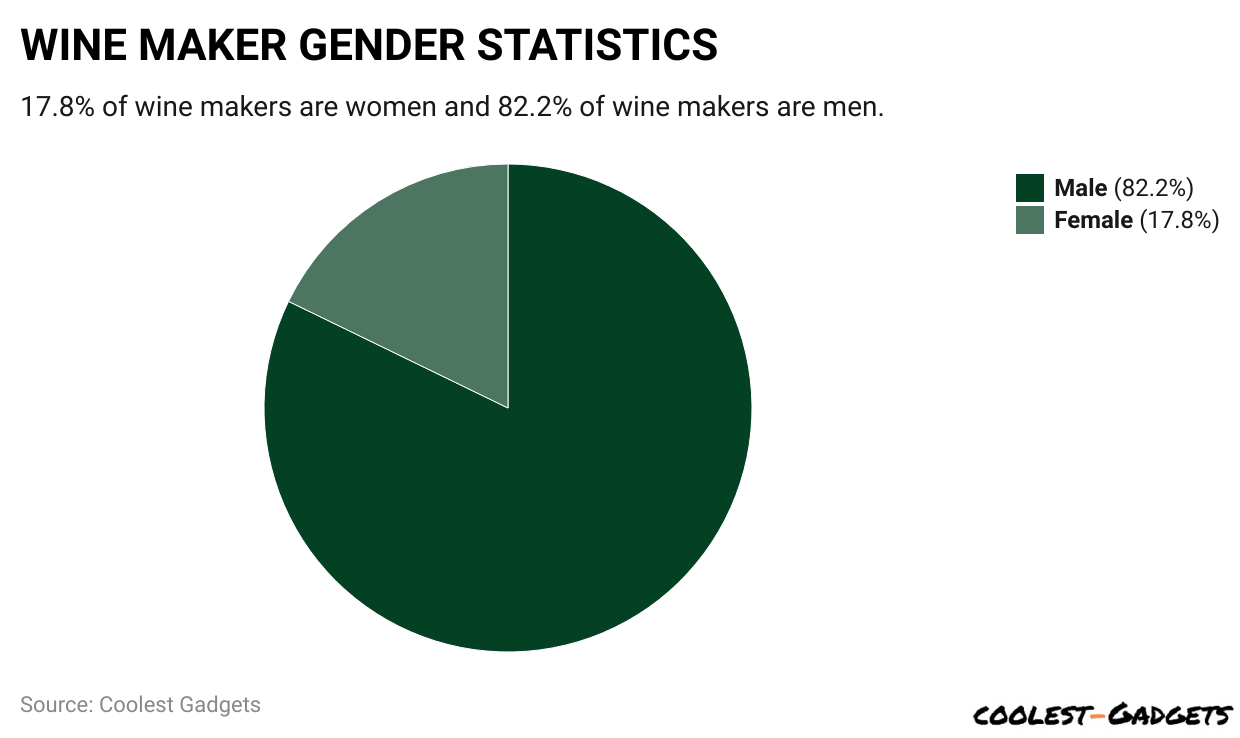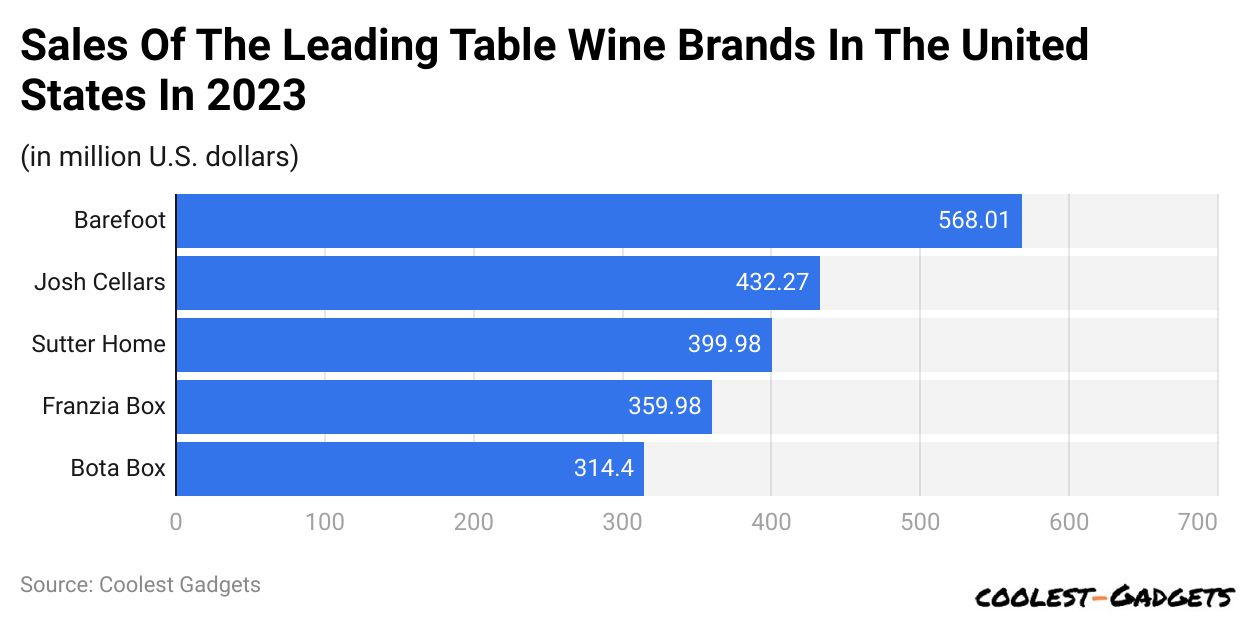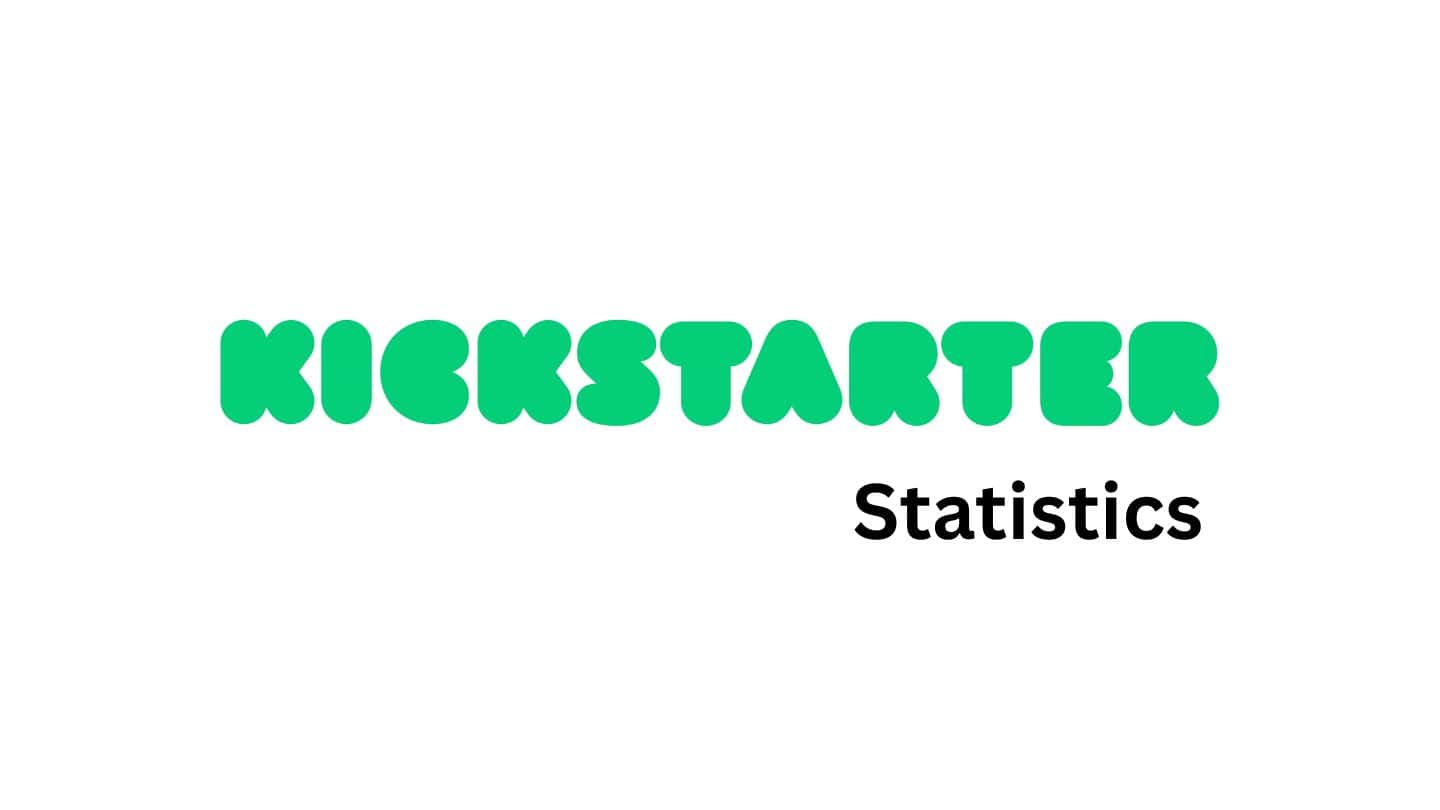Wine Industry Statistics By Revenue, Consumption and Facts

Updated · Mar 18, 2025


TABLE OF CONTENTS
- Introduction
- Editor’s Choice
- General Wine Industry Statistics
- Wine Industry By Regions
- Market Value Of Wine Worldwide By Country
- Revenue Of Wine Market In 2023 By Country
- Top 10 Wine Importer Countries In 2023
- Wine Industry Statistics By Employee Demographics
- Top 10 Wine Producers In The World
- Leading Table Wine Brands By Sales
- Calories In Wine
- Wine Consumption, History, And Winemakers
- Conclusion
Introduction
Wine Industry Statistics: The wine industry has become a billion-dollar industry worldwide. It encompasses production, packaging, and distribution. Winemaking and wine drinking are intertwined with cultural beliefs in many parts of the world. Over the years, the taste of wine has consistently improved, making it a significant component of various rich cultural and social gatherings.
To gain a deeper understanding of the current state of the wine industry, let’s delve into the Wine Industry Statistics.
Editor’s Choice
- According to a report by The Brands Men, rose wine consumption is expected to increase steadily by 25% over the next five years.
- Wine Industry Statistics show that around 10% of wineries in California, USA, are owned by women.
- Americans are the largest wine consumers, with 13% of the share in worldwide wine consumption.
- As a fun fact, Spain accounts for 42% of certified female wine tasters.
- According to a report by Zippia, the US wine industry is male-driven. There are 82.2% male winemakers, while the female workforce represents 17.8%.
- According to the Wine Industry Statistics 2024, the revenue in the worldwide market is projected to reach $353.4 billion, out of which 184.3 billion will be generated from at-home, such as (convenience stores and supermarkets), and out-of-home (bars and restaurants) will be $169.1 billion.
- The wine packaging market is expected to grow at a CAGR of 4.2% by 2026.
- In the USA in 2023, Barefoot was the best-selling table wine brand with 7.84 million sales.
- 58% of the winemakers are working in California, USA
- Organic rose wine sales are likely to grow in demand by 33% within the next ten years.
General Wine Industry Statistics
- As of 2023, there were more than 7,475 wine businesses located in the USA.
- Wine Industry Statistics show that around 10% of wineries in California, USA, are owned by women.
- As a fun fact, Spain accounts for 42% of certified female wine tasters.
- According to a report by The Brands Men, rose wine consumption is expected to increase steadily by 25% over the next five years.
- Furthermore, organic rose wine sales are likely to grow in demand by 33% within the next ten years.
- In the USA,12% of global wine production is made.
- Furthermore, 58% of the winemakers are working in California, USA.
- In addition, California has grabbed 43% of the USA’s wine business.
- 49% of wine packaging consists of glass bottles.
- As of today, wine grapes come in more than 10,000 varieties.
- By 2025, Wine Industry Statistics estimate that the United States of America will become the world’s largest wine market, surpassing France and China, with a valuation of $76.2 billion.
- Americans are the largest wine consumers, with 13% of the share in worldwide wine consumption.
- By 2026, the worldwide online wine sales are estimated to reach $20.17 billion.
- Furthermore, 55% of the worldwide wine market share is captured by Wine Market.
- In addition, the wine packaging market is expected to grow at a CAGR of 4.2% by 2026.
- Today, more than 10 million vineyards are built on around 10 million acres of land in the world.
Wine Industry By Regions
Worldwide
- According to the Wine Industry Statistics 2024, the revenue in the worldwide market is projected to reach $353.4 billion, out of which 184.3 billion will be generated from at-home, such as (convenience stores and supermarkets), and out-of-home (bars and restaurants) will be $169.1 billion.
- Moreover, the at-home revenue is projected to grow by 4.72% between 2024 and 2028.
- Comparing all countries, the United States of America is expected to generate the highest at-home revenue in 2024, resulting in $353.4 billion.
- In 2024, the total volume, i.e., at-home and out-of-home, is projected to reach 25.3 billion L.
- In the worldwide market, the at-home average volume per person is projected to amount to 2.50L in 2024.
- Furthermore, considering the total population of our planet, the average revenue per capita for the at-home segment is expected to reach $23.78.
Americas
- As of 2024, the American Wine Market’s at-home and out-of-home segments are expected to contribute $61.1 billion and $37.7 billion, respectively, making it $98.8 billion collectively.
- With respect to the total population in the USA, in 2024, Wine Industry Statistics estimate that the average revenue per capita for the at-home segment would be $60.08.
- Moreover, the combined volume is projected to amount to 6.7 billion L in the current year.
- By 2025, the American wine industry is projected to show a volume growth of 1.2%.
- In 2024, the average volume per person for the at-home category is expected to be 5.53L.
Asia
- The Asian Wine Industry is expected to generate a combined revenue of $58.0 billion in 2024.
- In connection with the total Asian population, the average revenue per capita in the at-home category is projected to amount to %5.86 in the current year.
- Furthermore, the combined volume of at-home and out-of-home is expected to amount to 3,378.0 mL in 2024.
- The average volume per person in the at-home segment of the Asian Wine Market in 2024 is projected to be 0.50L.
- By 2025, the wine market is estimated to show a growth volume for the at-home category at 5.2%.
Africa
- Based on the Wine Industry Statistics 2024, the combined revenue in the Asian wine market is expected to amount to $10.2 billion.
- Furthermore, considering Africa’s total population, the average revenue per capita for at-home will be $5.88 in 2024.
- The average volume per person is projected to amount to 0.66L in the current year for the at-home category.
- Between 2024 and 2028, the revenue is expected to grow by 11.46%.
Australia And Oceania
- As of today, the revenue at-home and out-of-home are projected to amount to $10.4 billion and $5.0 billion, respectively, in the Australia and Oceania Wine market.
- Between 2024 and 2028, the revenue is estimated to grow annually by 4.48%
- The combination of both segments, in terms of volume, is expected to amount to 695.0 mL in 2024.
- By 2025, the Wine market is estimated to show growth for the at-home segment will be 1.5%.
- As of 2024, the average volume per person in a similar segment is projected to amount to 13.16L.
Europe
- According to Wine Industry Statistics 2024, the European wine market is projected to generate a combined revenue of $170.9 billion.
- Furthermore, relating to the European population, the average revenue per capita for the home category is expected to amount to $92.95.
- The Wine market is projected to grow in volume for the at-home segment by 0.6% by 2025.
- The average volume per person in a similar segment is expected to be 11.91L in 2024.
You May Also Like To Read
- Coca-Cola Statistics
- Soft Drinks Sales Statistics
- Coffee Industry Statistics
- Soft Drink Sales Statistics
- Energy Drink Statistics
- PepsiCo Statistics
- Starbucks Statistics
- Tea Statistics
Market Value Of Wine Worldwide By Country
The following chart shows the market value of wine worldwide in 2027, based on a report by Statista in 2024. According to Wine Industry Statistics, the United States, France, and China are projected to have the highest market values by the forecast year.
| Country | Market Value (in million US dollars) |
| United States | 71,110 |
| France | 33,190 |
| China | 31,700 |
| Italy | 27,120 |
| United Kingdom | 23,920 |
| Canada | 22,800 |
| Germany | 20,130 |
| Indonesia | 15,570 |
| Australia | 14,270 |
| Japan | 13,120 |
| Spain | 11,310 |
| Russia | 9,377 |
| Sweden | 7,936 |
| Belgium | 7,851 |
| Netherlands | 6,8,68 |
| Switzerland | 6,252 |
| Portugal | 5,803 |
| Argentina | 5,491 |
| Chile | 5,329 |
| Austria | 4,874 |
(Source: statista.com)
Revenue Of Wine Market In 2023 By Country
| Country | Revenue (in million US dollars) |
| United States | 56,403.53 |
| China | 27,092.68 |
| France | 26,026.8 |
| Italy | 21,296.39 |
| United Kingdom | 20,877.15 |
| Canada | 17,268.02 |
| Germany | 15,542.81 |
| Australia | 11,691.33 |
| Japan | 10,078.54 |
| Spain | 8,889.89 |
| Russia | 7,140.96 |
| Belgium | 6,262.04 |
| Sweden | 5,949.06 |
| Netherlands | 5,638.35 |
| Switzerland | 5,135.8 |
| Argentina | 5,035.51 |
| Portugal | 4,351.49 |
| Chile | 4,151.02 |
| Brazil | 3,566.43 |
| Indonesia | 1,417.19 |
(Source: statista.com)
Top 10 Wine Importer Countries In 2023
Based on the Wine Industry Statistics provided by Tradeimex Solutions, the following are the largest wine-exporting countries in 2023.
| Countries | Total Import Value (in US dollars) |
| France | $12.92 billion |
| Spain | $3.20 billion |
| Chile | $1.52 billion |
| Australia | $1.38 billion |
| New Zealand | $1.29 billion |
| United States of America | $1.22 billion |
| Germany | $1.14 billion |
| Portugal | $1 billion |
| Argentina | $652.17 million |
| South Africa | $617.85 million |
(Source: tradeimex.com)
In addition, the same Tradeimex Solution report lists the top 10 Wine Supply Companies in the world.
| Brand | Country |
| Castel Freres | France |
| The Wine Group | USA |
| John Distilleries | India |
| Pernod Ricard | France |
| Constellation Wines | Australia |
| Asahi Groups Holdings Ltd | Japan |
| Sula Vineyards Pvt. Ltd. | India |
| Beijing Yanjin Beer Group Corporation | China |
| Treasury Wine Estate | Australia |
| Accolade Wines | Australia |
(Source: tradeimex.com)
Wine Industry Statistics By Employee Demographics
By Gender
 (Reference: zippia.com)
(Reference: zippia.com)
According to a report by Zippia, the US wine industry is male-driven. There are 82.2% male winemakers, while the female workforce represents 17.8%.
By Race
| Wine Maker Race | Percentages |
|---|---|
| White | 68.8% |
| Hispanic or Latino | 15.7% |
| Black or African American | 8.5% |
| Unknown | 4.9% |
| Asian | 1.5% |
| American Indian and Alaska Native | 0.6% |
(Source: zippia.com)
Wine Industry Statistics show that most of the winemakers in the USA belong to the white race, representing 68.8% of the winemakers. Hispanic, or Latino, accounts for 15.7%, while black or African Americans represent 8.5%. There is a 1.5% Asian wine market, and 0.6% comes from American Indian and Alaskan natives.
You Might Find This Interesting
- Domino’s Pizza Statistics
- Pizza Hut Statistics
- Snacks Statistics
- Kraft Heinz Statistics
- KFC Statistics
- Burger King Statistics
- Beverages Statistics
- McDonald’s Statistics
Top 10 Wine Producers In The World
According to Wine Industry Statistics, Italy is the largest wine producer in the world today. Of the worldwide wine business, 17% is made up of Italy’s wine industry.
| Country | Total Production (litres per year) | Expected Wine Market Size in 2024 (in US dollars) | Total Grape Production | Popular Wine Type |
| Italy | 4,250,000 | $6.5 billion | 248,000 metric tons | Brunello di Montalcino, Barolo, Chianti |
| France | 3,641,900 | $12.4 billion | 619,995,000 tonnes | Burgundy, Bordeaux, Champagne |
| Spain | 3,248,000 | $2.4 billion | 300,000 tonnes | Tempranillo, Rioja, Cava |
| United States | 2,333,900 | $39 billion | 5.92 million tonnes | Oregon Pinot Noir, Napa Valley Cabernet Sauvignon, Sonoma County Chardonnay |
| Australia | 1,369,000 | $8,960 million | 1.75 million metric tonnes | Hunter Valley Semillon, Barossa Valley Shiraz, Shiraz (Syrah) |
| Argentina | 1,182,100 | $2,909.0 million | 15.4 million tonnes | Torrontés, Mendoza Malbec, Malbec |
| China | 1,163,600 | $10.3 billion | 420,000 tons | Great Wall Dry Red, Changyu Cabernet |
| South Africa | 1,080,100 | $1,448.0 million | 13,75,937 tonnes | Chenin Blanc, Stellen Cabernet Sauvignon, Pinotage |
| Chile | 949,200 | $369.10 million | 720,000 metric tons | Concha y Toro Cabertnet Sauvignon, Carménère, Casillero del Diablo Cbernet Sauvignon |
| Germany | 746,200 | $8.2 billion | 9.25 million hectoliters | Spätburgunder (Pinot Noir), Riesling, Gewürztraminer |
(Source: geeksforgeeks.com)
Leading Table Wine Brands By Sales
 (Reference: statista.com)
(Reference: statista.com)
In the USA in 2023, Barefoot was the best-selling table wine brand with 7.84 million sales. Bota Box and Sutter Home ranked second and third with 5.66 and 5.21 million sales, respectively. Franzia Box and Josh Cellars generated 5.21 million and 2.75 million in sales, respectively.
Calories In Wine
| Red Wine (5 fl oz glass serving) | Fat (g) | Carbs (g) | Protein (g) | Calories |
| Zinfandel | – | 4.20 | 0.10 | 131 |
| Syrah | – | 3.79 | 0.10 | 123 |
| Red Table | – | 3.84 | 0.10 | 125 |
| Pinot noir | – | 3.40 | 0.10 | 122 |
| Sangiovese | – | 3.85 | 0.10 | 128 |
| Merlot | – | 3.69 | 0.10 | 123 |
| Cabernet Sauvignon | – | 3.82 | 0.10 | 123 |
| Carbernet Franc | – | 3.60 | 0.10 | 125 |
| Burgundy | – | 5.46 | 0.10 | 129 |
| Chianti | – | 4.01 | 0.10 | 124 |
| Gewurztraminer | – | 3.82 | 0.10 | 121 |
| White Wine (5 fl oz glass serving) | Fat (g) | Carbs (g) | Protein (g) | Calories |
| White Table | – | 3.82 | 0.10 | 122 |
| Sauvignon Blanc | – | 3.01 | 0.10 | 121 |
| Pinot Gris (Grigio) | – | 3.03 | 0.10 | 123 |
| Chenin Blanc | – | 4.90 | 0.10 | 120 |
| Chardonnay Wine | – | 3.43 | 0.10 | 122 |
| Riesling | – | 5.54 | 0.10 | 121 |
| Semillon | – | 4.59 | 0.10 | 122 |
| Other Suggestions | Fat (g) | Carbs (g) | Protein (g) | Calories |
| Port, 2 fl oz | – | 8.08 | 0.12 | 94 |
| Wine Cooler, 1 | 0.04 | 13.69 | 0.13 | 118 |
| Table Wine, 5 fl oz | – | 4.03 | 0.10 | 124 |
| Wine Spritzer,1 | – | 2.38 | 0.06 | 73 |
| Sweet Dessert Wine, 1 glass | – | 14.10 | 0.21 | 165 |
| Light Wine, 5 fl oz | – | 1.73 | 0.10 | 74 |
| Cooking Wine, 1 fl oz | – | 1.83 | 0.14 | 14 |
(Source: fatsecret.com)
Wine Consumption, History, And Winemakers
Wine, a beverage steeped in history and culture, continues to evolve alongside consumer preferences. As we navigate 2024, let’s delve into the fascinating world of wine, exploring its ancient origins, intriguing facts, and the ever-changing landscape for winemakers.
A Toast To The Past: A Brief History Of Wine
The history of wine stretches back millennia, with evidence of grape cultivation and fermentation dating back to 8,000 BC in Georgia. Early civilizations in Mesopotamia, Egypt, and Greece all embraced winemaking, using it for both religious ceremonies and everyday consumption. As empires rose and fell, so too did viticulture (grape cultivation) and winemaking techniques spread throughout Europe and beyond.
The Romans played a significant role in the development of wine. They introduced viticulture to Gaul (modern-day France) and perfected techniques like ageing in oak barrels, which continue to shape wine styles today. With the rise of Christianity, wine became deeply intertwined with religious practices, further solidifying its cultural importance.
Due to political instability, European wine production declined in the Middle Ages. However, by the Renaissance, winemaking flourished once again. New grape varieties were introduced, and techniques like cork stoppers improved storage and transportation. The Age of Exploration further expanded the reach of wine, with European colonists bringing grapevines to new continents like North and South America.
The 19th and 20th centuries witnessed significant advancements in viticulture and winemaking. Louis Pasteur’s invention of pasteurisation helped prevent spoilage and the development of new technologies like temperature-controlled fermentation allowed for more precise winemaking.
Fascinating Wine Facts For Every Enthusiast
Whether you’re a seasoned sommelier or a curious novice, here are some intriguing facts about wine to impress your fellow wine lovers:
- The oldest known winery: Located in Armenia, the Areni-1 winery dates back to around 4,100 BC and includes a fermentation vat, storage jars, and even grape seeds.
- The most expensive bottle of wine ever sold: In 2020, a bottle of Chateau Margaux 1787 fetched a staggering $575,000 at auction.
- Left vs. Right Bank Bordeaux: In Bordeaux, France, the left bank is known for elegant Cabernet Sauvignon-dominant wines, while the right bank features Merlot-based blends with a softer style.
- The “Bordeaux Blend”: This classic blend typically combines Cabernet Sauvignon, Merlot, Cabernet Franc, and Malbec grapes.
- The “Rhone Blend”: This blend from the Rhone Valley in France often features Syrah and Grenache grapes, creating bold and spicy wines.
The Evolving Consumer: What’s On Tap For Wine Consumption In 2024?
The landscape of wine consumption is constantly shifting. Let’s explore some key trends shaping the market in 2024:
- Rise of Premiumization: Consumers are increasingly willing to spend a little more on high-quality wines with a focus on unique varietals and sustainable practices.
- Sustainability Focus: Eco-conscious consumers are driving the demand for organic, biodynamic, and natural wines produced with minimal intervention.
- Experience Over Price: Millennial and Gen Z consumers are more interested in the overall wine experience, seeking out new and exciting varieties and regions beyond traditional favourites.
- Direct-to-Consumer (DTC) Sales: With the rise of e-commerce, wineries are increasingly selling directly to consumers, offering greater variety and convenience.
- Demand for Sparkling Wines: From Prosecco to Champagne, sparkling wines continue to enjoy a surge in popularity, particularly for celebratory occasions and casual drinking.
- Wine by the Glass: Restaurants offering a wider selection of wines by the glass cater to those who want to explore different styles without committing to a full bottle.
The Future Of Winemakers: Embracing Innovation And Sustainability
As consumer preferences evolve, so too must the strategies of winemakers. Here’s what the future holds for this dynamic industry:
- Focus on Innovation: Winemakers are experimenting with new grape varietals, fermentation techniques, and ageing methods to create unique and appealing wines.
- Climate Change Adaptation: With rising temperatures and unpredictable weather patterns, winemakers are adopting sustainable practices like water conservation and drought-resistant grape varietals to ensure long-term success.
- Embrace Technology: Advancements in technology, including precision viticulture and artificial intelligence, are enabling winemakers to optimise grape growing and wine production processes for better quality and efficiency.
- Building Brand Loyalty: Wineries are increasingly focused on building strong brand identities that resonate with their target audience. This includes storytelling, engaging social media presence, and offering unique experiences like winemaker dinners and vineyard tours.
- Direct Engagement with Consumers: With the rise of DTC sales, wineries are forging closer relationships with consumers, offering subscription services, personalised recommendations, and virtual tasting experiences.
- Collaboration and Community: Winemakers are recognizing the power of collaboration, sharing knowledge and best practices to navigate challenges and promote their regions.
Explore More Like This
- Danone Statistics
- General Mills Statistics
- Campbell Soup Company Statistics
- TreeHouse Foods Statistics
- Yeti Statistics
- Mondelez International Statistics
- Tyson Foods Statistics
- Kellogg’s Statistics
Challenges And Opportunities: A Look Ahead
Despite the exciting opportunities, winemakers also face significant challenges:
- Global Competition: The wine market is highly competitive, with producers from new and established regions vying for consumer attention.
- Economic Fluctuations: Economic downturns impact consumer spending, potentially leading to decreased demand for premium wines.
- Climate Change: The aforementioned challenges posed by climate change require continuous adaptation and innovation from winemakers.
However, these challenges also present opportunities for forward-thinking winemakers. By embracing sustainable practices, focusing on quality and innovation, and building strong relationships with consumers, the industry can ensure a vibrant future.
Conclusion
Wine is much more than just a beverage; it’s a cultural touchstone with a rich history and ever-evolving future. As consumer preferences shift and winemakers adapt, the industry continues to offer exciting discoveries for enthusiasts around the globe. Whether you’re a seasoned connoisseur or just starting your wine journey, there’s a world of flavours and experiences waiting to be explored.
So, raise a glass to the future of wine, a future brimming with innovation, sustainability, and the enduring passion of winemakers worldwide. Hope these Wine Industry Statistics have filled you with a glass full of chill wine.

Barry Elad is a tech enthusiast passionate about exploring various technology topics. He collects key statistics and facts to make tech easier to understand. Barry focuses on software and its benefits for everyday life. In his free time, he enjoys creating healthy recipes, practicing yoga, meditating, and walking in nature with his child. Barry's mission is to simplify complex tech information for everyone.











